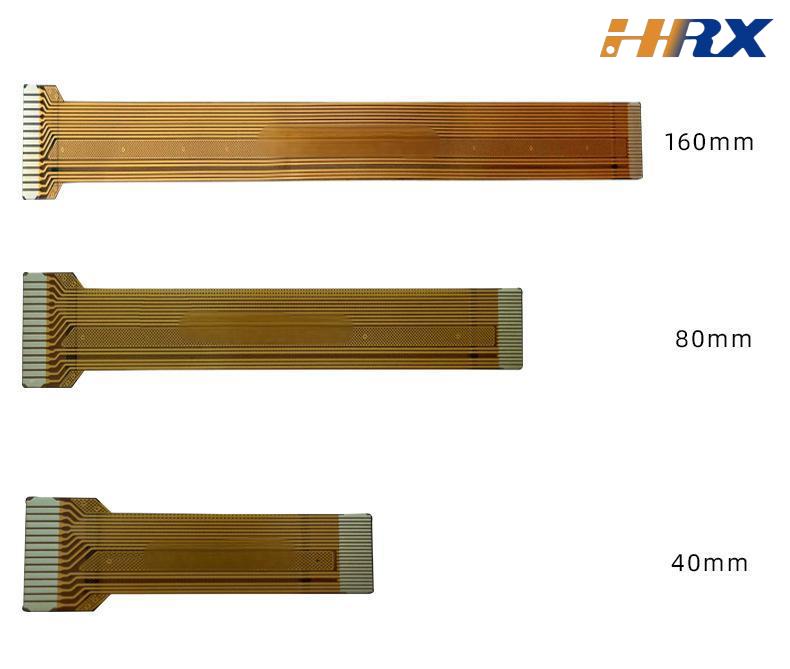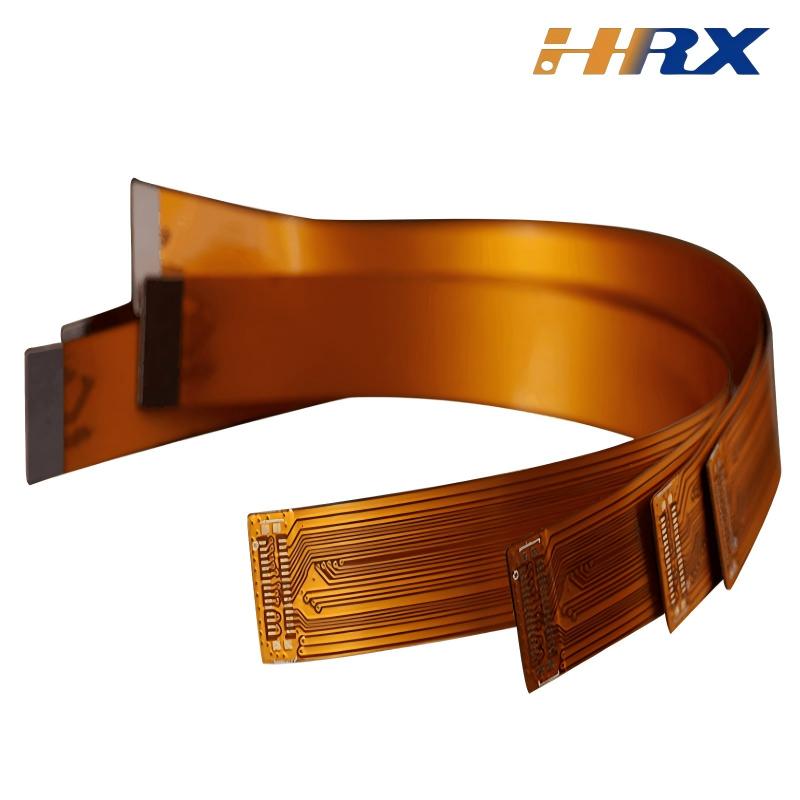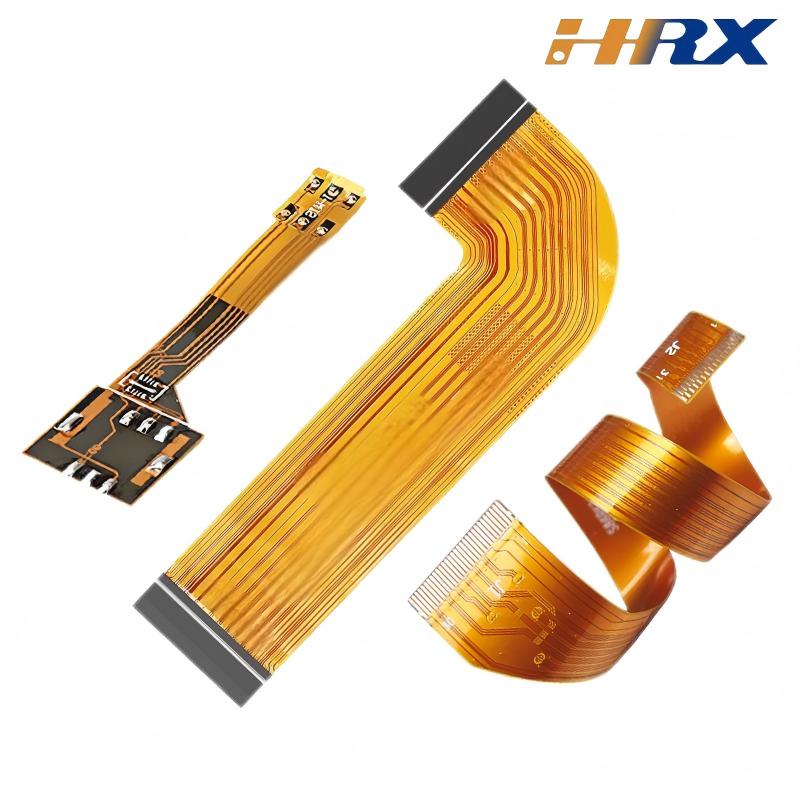Search
Understanding Pitch and Pin in FPCB: A Technical Deep Dive
- Jun 28,2025
-
Share
In the realm of Flexible Printed Circuit Boards (FPCBs), precision and technical understanding are the cornerstones of successful design and manufacturing. Two terms that frequently surface in FPCB discussions are "pitch" and "pin." In this blog post, we will demystify these terms, explore their characteristics, and highlight their differences. As Shenzhen Huaruixin Electronics Co., Ltd., a leading global ODM/OEM manufacturer of FPC, PCB, and Rigid - Flex Printed Boards, we will also share our insights on how these concepts are applied in real - world scenarios.

What is Pitch in FPCB?
Pitch, in the context of FPCB, refers to the distance between the centers of two adjacent conductors, pads, or pins. It is a critical parameter that determines the density of the circuit layout. A smaller pitch allows for more components to be packed into a given area, leading to more compact and high - density circuit designs. For example, in high - end smartphones or wearables, where space is at a premium, FPCBs with ultra - fine pitch (as low as 0.1mm or even less in some advanced designs) are used to accommodate a large number of components while keeping the overall size of the device to a minimum.
Common pitch values in FPCBs range from 0.3mm, 0.5mm, 0.8mm, 1.0mm, 1.25mm, 1.27mm, 2.0mm, to 2.54mm. However, as technology advances and the demand for smaller and more powerful devices grows, manufacturers are constantly pushing the boundaries to achieve even smaller pitch sizes. At Shenzhen Huaruixin Electronics Co., Ltd., our state - of - the - art manufacturing facilities enable us to work with a wide range of pitch values, ensuring that we can meet the diverse needs of our clients, whether they are in the consumer electronics, automotive, or medical device industries.
Characteristics of Pitch
Determines Component Density: As mentioned earlier, a smaller pitch enables higher component density. This is crucial for applications where space is limited, such as in miniaturized medical implants or compact IoT devices.
Affects Manufacturing Complexity: Smaller pitch values pose significant challenges during the manufacturing process. They require more precise alignment, higher - resolution imaging techniques, and more advanced soldering processes. For instance, when dealing with a pitch of 0.3mm or less, even a slight misalignment during the soldering process can lead to short circuits or open connections, which can be disastrous for the functionality of the final product.
Influences Signal Integrity: In high - speed applications, the pitch can also impact signal integrity. A smaller pitch may lead to increased signal interference due to the closer proximity of conductors. Designers need to carefully consider factors such as impedance matching, crosstalk, and signal attenuation when working with fine - pitch FPCBs.
What is a Pin in FPCB?
A pin, in an FPCB, is a physical protrusion or contact point that is used to connect the FPCB to other components, such as connectors, integrated circuits (ICs), or other circuit boards. Pins can be either male (protruding) or female (receptacle - like). They are designed to provide a reliable electrical connection and mechanical support. For example, in a typical FPCB - to - motherboard connection in a laptop, the FPCB may have a set of pins that fit into a corresponding connector on the motherboard, ensuring a stable connection for data transfer and power supply.
Pins come in various shapes, sizes, and configurations, depending on their application. Some common types of pins include straight pins, bent pins, and pins with special coatings or features for improved conductivity or corrosion resistance. At Shenzhen Huaruixin Electronics Co., Ltd., we offer a wide range of pin options to suit different customer requirements. Our engineering team works closely with clients to select the most appropriate pin design based on factors such as the application environment, power requirements, and signal transmission needs.
Characteristics of Pins
Mechanical and Electrical Function: Pins serve a dual purpose of providing both mechanical stability and electrical connectivity. They must be able to withstand the forces associated with assembly, disassembly, and normal use without breaking or losing their electrical connection. For example, in automotive applications, where the FPCB may be subject to vibrations and temperature variations, the pins need to be robust enough to maintain a reliable connection over the lifetime of the vehicle.
Variability in Design: The design of pins can vary widely. Some pins may be designed for easy insertion and removal, such as in connectors that are meant to be frequently unplugged and replugged. Others may be designed for a more permanent connection, such as those used in surface - mount technology (SMT) applications. Additionally, pins can be customized with different plating materials, such as gold, silver, or tin, to enhance their conductivity and corrosion resistance.
Interfacing with Other Components: Pins are the primary means of interfacing the FPCB with other components in a system. The compatibility between the pins on the FPCB and the mating components (such as connectors or ICs) is crucial for ensuring proper functionality. A mismatch in pin size, shape, or pitch can result in a poor connection or even prevent the components from being connected at all.
Differences between Pitch and Pin
Definition and Function: The fundamental difference between pitch and pin is in their definitions and functions. Pitch is a measurement of the distance between adjacent elements, which is mainly a design parameter that affects the layout density. On the other hand, a pin is a physical component that is used for connection purposes.
Physical vs. Geometric: Pins are physical entities that can be seen and touched, while pitch is a geometric measurement. You can physically identify and manipulate pins during the assembly process, but pitch is a value that is specified in the design phase and affects how the components are arranged on the FPCB.
Manufacturing Considerations: Manufacturing pins requires processes such as stamping, plating, and assembly, while working with a specific pitch requires precise imaging, etching, and soldering techniques. For example, when manufacturing pins, the focus is on ensuring the correct shape, size, and mechanical strength, whereas when dealing with a fine pitch, the emphasis is on achieving accurate alignment and minimizing errors during the circuit - making process.
Shenzhen Huaruixin Electronics Co., Ltd. - Our Technical Edge
At Shenzhen Huaruixin Electronics Co., Ltd., we have a deep understanding of the importance of pitch and pin in FPCB design and manufacturing. Our team of experienced engineers and technicians is well - versed in handling a wide range of pitch values and pin configurations. We leverage the latest technologies and manufacturing processes to ensure the highest quality products.
Our manufacturing facilities are equipped with advanced equipment for precision imaging, etching, and soldering, which allows us to work with even the most challenging pitch requirements. We also have strict quality control measures in place to ensure that each FPCB meets the highest standards of performance and reliability. Whether it's a high - density FPCB with a fine pitch for a cutting - edge smartphone or a rugged FPCB with specialized pins for an industrial application, we have the expertise and capabilities to deliver outstanding results.
Conclusion
In conclusion, pitch and pin are two fundamental concepts in the world of FPCBs. Understanding their meanings, characteristics, and differences is essential for anyone involved in the design, manufacturing, or use of FPCBs. At Shenzhen Huaruixin Electronics Co., Ltd., we are committed to providing our clients with the highest quality FPCBs, leveraging our in - depth knowledge of these and other technical aspects.
If you have any project requirements or need further information about FPCBs, please don't hesitate to contact us. You can visit our website at www.hrxfpc.com for more industry knowledge and details about our products and services. You can also reach out to us via email at sales@hrxfpc.com. We look forward to collaborating with you and helping you bring your ideas to life.

Let’s talk! We’ll provide the perfect solution for you!
-
 Huaruixin Electronics mainly produces printed circuit boards as the core business, to provide customers with one-stop solutions for FPC/PCB production, components sourcing and Assembly.
Huaruixin Electronics mainly produces printed circuit boards as the core business, to provide customers with one-stop solutions for FPC/PCB production, components sourcing and Assembly. - WHAT WE DO — PCB Design Solutions — Flex PCB Production — Components Sourcing — FPC&PCB Assembly
- PRODUCTS — Single Sided Flexible Circuits — Double Sided Flexible Circuits — Multilayer Flexible Cirucits — Rigid-Flex Circuits — FPC Assembly — PCB Assembly
- CAPABILITY — FPC Capability — Rigid-Flex Capability — PCB Capability — Assembly Capability
- Copyright © 2024 Shenzhen Huaruixin Electronics Co., Ltd. All Rights Reserved.
- Design By BONTOP


